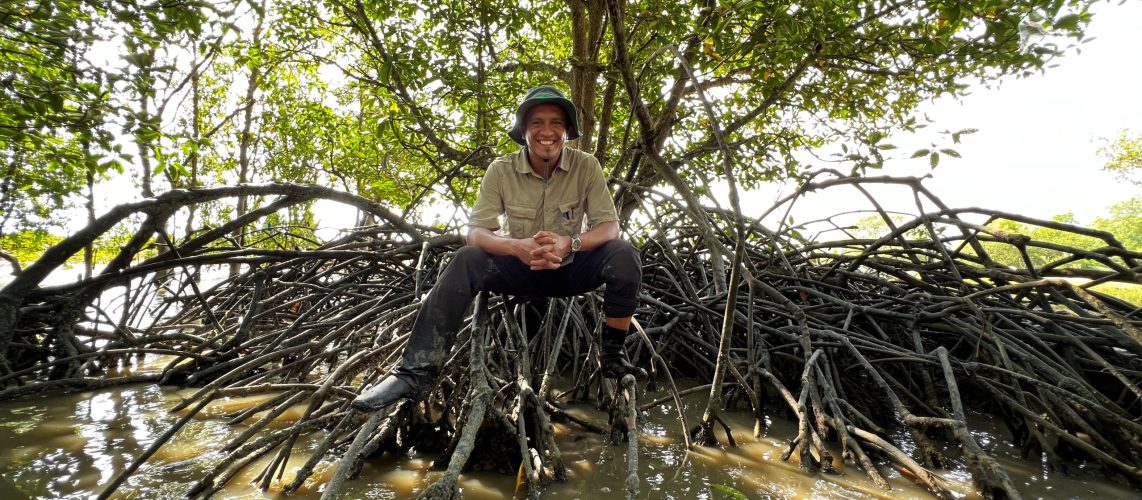This article has been published in New Straits Times on 26 July 2021.
Mangroves are one of the most recognisable ecosystems in Malaysia due to their unique physical characteristics, particularly their roots, as well as the location where they thrive, in between land and sea — the intertidal zones throughout the country’s coasts and estuaries.
Located in between terrestrial and marine biomes, mangroves are sometimes treated less appropriately due to the unintegrated jurisdiction on the management of their resources.
Often associated with their forest resources like timber, they should also be treated as important habitats and nurseries for marine life, that in turn ensures sustainability of our seafood and fisheries resources, as well as socioeconomic security and wellbeing of our coastal communities.
The key is in implementing and enforcing a more holistic approach in the governance of resources by recognising the dynamism and the connectivity of mangroves with surrounding ecosystems.
Understanding the biophysical linkages between mangroves and rivers, beaches, seagrass, coral reefs and ocean ecosystems will lead to a more holistic approach in managing and sustaining coastal environment and resources.
The highest priority must be given to protect our coastlines as they are facing more rapid challenges and stronger impact from ever increasing anthropogenic pressures, as well as the compounding effects of climate change.
Anthropogenic impact ranges from land, river and ocean-based pollution to the exploitation of land for space for economic development, such as ports, agriculture, aquaculture, industrialisation and urbanisation.
Climate factors, such as rising sea levels and intense and frequent storms, cause mangroves and coastlines to suffer.
Encroachment or any change in coastal land use must be stopped immediately as the shrinking of mangroves and coastal habitats will increase the vulnerability of our coastlines and the safety and security of coastal communities.
We should implement concrete, holistic action to further protect mangroves and coastal habitats while at the same time prepare for a more solid adaptation plan in the face of climate change.
As a recent report by Meagan Cantwell in the Science journal published on July 9, 2021 says, Malaysia, being one of the top mangrove-holding nations in the world, is in the best position to showcase exemplary mechanisms in governing our mangroves. The sustainable management of the Matang mangrove forest in Perak, for instance, has been recognised as a global reference for mangrove forest management and research for more than 100 years.
For that, the recent call by the energy and natural resources minister to nominate Matang and Kuala Gula mangroves as Ramsar sites is applauded by local, public and scientific communities.
The listing will provide a global brand to the already well-known wetland as it will spark stronger interest from global communities to support conservation of the area. It can ignite wonderful opportunities to promote nature tourism for Perak and Malaysia.
The effort must of course be supported by strong scientific knowledge, education and awareness at the levels.
It is timely for Malaysia to establish a centre of excellence to further promote and coordinate scientific research and knowledge exploration. It will put us in the forefront of championing the cause for mangrove research, management and conservation.
The centre can be the key reference point for the dissemination of knowledge and information for local communities and potentially be recognised as a regional and global reference on mangroves and mangrove research. The Matang mangrove forest will be the best location for the establishment of this centre.
Any success will be determined through strong collaboration, participation and partnership by local and global scientific communities and authorities. And it will ensure the steady support and flow of research funding to ensure the sustainability and longevity of our mangrove research, management and conservation efforts.
In light of this year’s celebration of the International Day for the Conservation of the Mangrove Ecosystems today, let us critically consider these ideas and the proposal suggested by the minister in finding the balance and solutions to tackle the issues at hand.
It will be prudent for all states in Malaysia to begin recognising the importance and value and strengthen the protection of their iconic mangroves and wetlands for the benefit of their people and nature.
